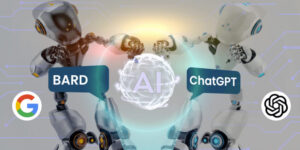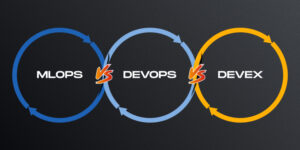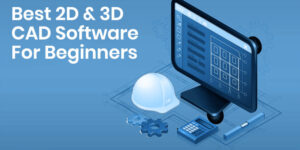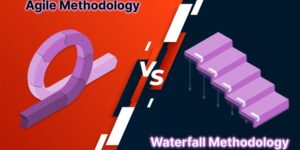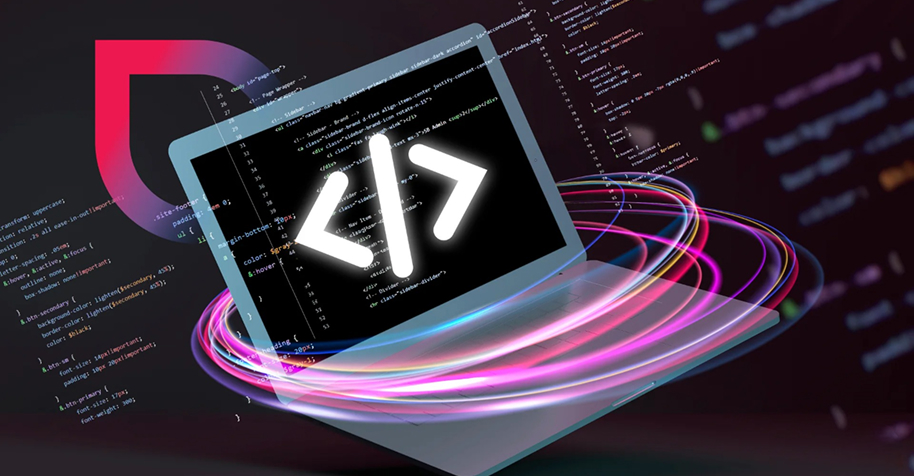
The internet is swamped with such articles; still, we believe that this piece is going to be very helpful for you.
Undoubtedly, choosing the right software development model among so many out there may seem like a task. But it is not! The choice of the right software development model is mainly influenced by factors like project size, complexity, budget, and the need for adaptability. By following a suitable model, teams can improve efficiency, collaboration, and the overall success of software projects.
There are dozens of software development models available out there. However, with us you don’t need to try every model to find the best one. Just read this post. Here, we have compiled a list of the top 6 software development models to know in 2025. Let’s dive in…
What Exactly is a Software Development Model?
Software development model is a structured approach that helps developers plan, create, test and deliver software applications in a timely fashion. These models help developers to know how to navigate the complex and demanding process of building software. They provide developers with the framework to organize tasks, define workflows, and ensure that each stage of development is completed systematically. Aside from that, software development models also help teams to manage resources, timeline and reduce risks all while maintain the quality standards.
However, it is crucial to choose the right software development model. This is because the project’s quality, timeframes, budget, and ability to meet stakeholders’ expectations all depend on the model you choose. Partnering with a reliable Software Development company can further ensure that the chosen model is implemented effectively to maximize success. There are dozens of software development models available to choose from. However, we have listed the top ones here in this post to help you make an informed decision. So, let’s get started…
What Do You Need for a Successful Software Development Project?
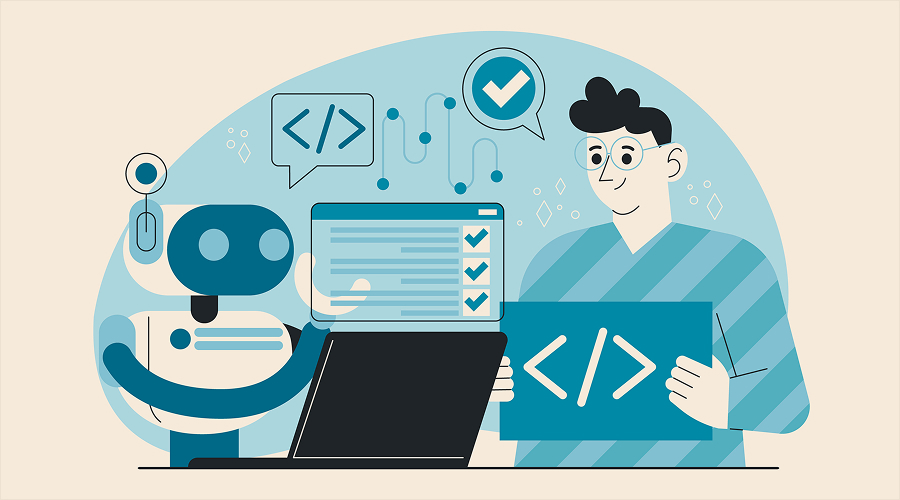
Among several other things, proper analysis and research about the software concepts are essential for a successful software development project. Aside from that, you need to focus on execution planning, business landscape and objectives. Choosing the right software development life cycle models can help tremendously. According to a study, only 29% of IT projects succeed and the rest either fail or are marked as challenged. Those that fail mainly fail because of inadequate planning, unrealistic expectations, poor communication, stakeholders’ lack of engagement and so on. The right selection of SDLC models can help meet your modern software development needs. The right model helps you define the structured framework for development.
Let’s now take a look at the list of the 6 best Software Development Models in 2025. Here we go…
Also Read: Software Development Process: Definition, Stages, and Methodologies
Top 6 Software Development Models in 2025
When it comes to selecting the best software development models, the ones outlined here top the list. Take a look at these models and know which fits your requirements the best…
1. Agile Model
At number 1, we have listed the Agile Model. The Agile Model is an iterative and incremental software development approach. It majorly focuses on flexibility, customer collaboration, and faster delivery. Unlike other models, Agile allows developers to build the software in small cycles. Agile breaks the project into small cycles that are known as “sprints” (usually 2–4 weeks). Each sprint is meant to deliver a working piece of the product. Each working piece of the product is then reviewed, tested and improved based on customer feedback. This makes reviewing, testing and improving the product easier and faster. When it comes to the most flexible and adaptable software development model, the Agile Model stands out. It is one of the most flexible models out there.
Pros of Agile Model:
- Offers much needed flexibility and is easy to adapt.
- Changes in requirements can even be accommodated in later stages of the development.
- Delivery in sprints make the process of delivering the final product faster.
- Reviewing, testing and improving becomes a breeze with the Agile Model
- Constant feedback ensures the product aligns with client needs.
- Improved communication between developers, testers and stakeholders.
- Improved collaboration between developers, testers and clients reduces misunderstandings.
- Help identify and fix bugs in early stages, saving a lot of time.
- Frequent iterations and reviews ensure a delivery of more refined and user-friendly product.
- Allows stakeholders to have full transparency.
Cons of Agile Model:
- It offers less predictability. Predicting costs, timelines and final outcomes in the start is not possible with the Agile Model.
- Requires immense involvement from the client’s end
- Prone to scope creep risk.
- Continuous changes sometimes cause projects to drift without strong control
- The documentation procedure may go overlooked.
- It requires a team of experienced developers, testers, and product owners to manage evolving requirements.
Ideal For:
The Agile Model is considered best for projects where flexibility, speed, and customer involvement are more important than strict planning and documentation. More often than not, the Agile Model is used for customer-centric applications, including mobile apps, web platforms, and SaaS solutions. It is again ideal when goals are not predetermined at the start of the project and for the ones indulged in dynamic market, such as gaming, healthcare, and so on. Also, it is best for businesses experimenting with new ideas and needing quick market validation.
Not Ideal For:
The Agile Model is not suitable for clients who cannot dedicate time to regular feedback. For the projects with strict timelines and budgets.
2. Waterfall Model
At number 2, we have the Waterfall Model. It is one of the earliest software development models. The best thing about this model is that it is very easy to use. It follows a linear and sequential approach to software development. It flows down like a “waterfall” through phases, thus the name. Everything from requirement gathering to system design, deployment to maintenance happens seamlessly. Each phase in the Waterfall Model is completed before you move to the next without overlapping or iterations.
Pros of the Waterfall Model:
- A clear and sequential structure makes it easier for developers to understand and manage
- Well-defined requirements and detailed planning
- Significantly reduces uncertainty and risks.
- Each phase has specific deliverables and a review process
- Allows for predicting progress
- Clear and thorough documentation
Cons of the Waterfall Model:
- Offers no flexibility once a phase is completed
- Testing is only possible after the project is completed
- Often leads to delays in discovering issues and fixing them all
- It can be an expensive endeavour if changes need to be made in between the development
- Can be complicated for long-term projects
- Provides insufficient opportunities for client feedback
Ideal For:
The Waterfall Model is considered most suitable for smaller and fixed-scope projects. The ones with unchanging requirements or that have clearly defined and stable requirements. Also, it can be used for low-risk, short-duration, industry-specific software development projects with strict regulations and standards.
Not Suitable For:
The Waterfall Model is not considered ideal for long-term projects with changing requirements.
3. Iterative Model
The next software development model in our list is the iterative model. The Iterative Model, as the name says, is the model that emphasizes starting with a simple version of the software and gradually enhancing it through repeated cycles, also called iterations. It allows developers to enhance the software with each iteration. This model allows developers to add new and advanced features based on feedback in each iteration. It allows for incremental improvements, unlike the waterfall model. The coolest thing about this software development model is that it helps gather feedback after each iteration. And the software can be enhanced based on the same feedback without wasting much time.
Pros of the Iterative Model:
- One of the most flexible and adaptable models
- It makes managing changes in requirements a breeze
- Helps save significant costs
- Helps deliver the project in a timely manner
- Detecting and fixing issues with the Iteration Model is a breeze
- Ensures faster software time-to-market.
- Enables stakeholders to receive and provide feedback
Cons of the Iterative Model:
- Resource-intensive model
- Can turn out to be costly if the architecture is not aligned with clear requirements
- Managing multiple iterations and changes can turn out to be complex
- Continuous stakeholder feedback for feature additions in each iteration frequently results in scope creep, ultimately causing cost and time overruns
Ideal For:
Iterative Software Development Models are considered ideal for innovation-driven projects. Aside from that, these models are perfect for software product development solutions with evolving requirements. Even mid-sized software projects with moderate complexity, like CMS, eCommerce platforms, CRM, ERP projects can be created using this model. In addition to that, applications focused on design that require regular UX validation, as well as projects that must be launched ahead of schedule, can benefit from iterative models. Partnering with an experienced E-commerce development company ensures that such projects are executed with agility, scalability, and user-focused design.
Not Ideal For:
Iterative Models of software development are not considered ideal for small projects. Aside from that, it is not ideal to use it for projects with stable requirements.
4. Big Bang Model
The next model that is often used for software development projects is the Big Bang Model. In contrast to other models, the Big Bang model is completely different. It doesn’t offer a certain method or planning strategy to implement. It is crucial to have a specialized team for software development when utilizing Big Bang Model. They usually begin coding with only a few requirements and directions. Software development with Big Bang model begins with the minimal initial planning. More often than not, the maximum amount of time and efforts are put in coding, testing and deploying the project.
Pros of the Big Bang Model:
- The Big Bang Model is very easy to understand and implement
- It requires too little planning
- Reduces time and effort significantly
- Allows developers to adapt to changing requirements and new technologies pretty conveniently
- Offers developers more freedom
- The simplicity of this software development model makes it easier for developers to manage projects effortlessly
Cons of the Big Bang Model:
- May sometimes lead to cost overruns
- The lack of planning often increases the risk of scope creep
- It doesn’t prioritize documentation, which ultimately leads to problems when it comes to modifications in the future.
- Missed deadlines are a common occurrence with the Big Bang model
Ideal For:
The Big Bang Model of software development is often best suited for projects with limited scope and straightforward functionalities. It is even considered ideal for MVP development services where speed matters more than scalability and academic projects that need to be developed quickly and with undefined requirements.
Not Ideal For:
The Big Bang Software Development Model is not ideal for projects with defined requirements or the ones with complex requirements.
5. Prototype Model
The next on the list of software development models is the Prototype Model. In this kind of model, a working prototype (early version of the software) is built before the final system is developed. The prototype includes the core functionalities and allows stakeholders to visualize the system, provide feedback, and refine requirements. The Prototype Model is considered ideal for solutions with unclear requirements in the beginning. The prototype is improved in phases until it closely meets user expectations so as to deliver a product that best matches clients’ needs. Businesses looking for an efficient way to test ideas and validate concepts can greatly benefit from a professional Product Prototyping Service to ensure the final software aligns with their vision.
Pros of Prototype Model:
- Allows clients and developers to clearly understand requirements and accordingly improve the solution
- Gives freedom for early improvements based on feedback and suggestions
- Significantly reduces the risk of failures
- Allows for testing of the product before full development
- Enhances collaboration between developers and clients.
- Early detection of missing features, issues, or problems pertaining to user experience
- Ensures the final product aligns well with user needs and expectations
Cons of Prototype Model:
- It can be time-consuming as it involves repeated iterations
- Delays in final development
- Leads to high cost if it involves building and discarding multiple prototypes
- High risk of scope creep if constant changes are requested
- Considered impractical for large-scale projects
- Reduced attention to detailed documentation
- Often leads to misleading expectations
Ideal For:
The Prototype Model is considered ideal for projects with unclear or evolving requirements. Aside from that, it is also beneficial for applications where the major focus is on design and usability through a professional UI/UX Design Service. Besides that, this model can also be used for projects that require high user interaction and feedback to test feasibility before committing to full-scale development. All in all, it is ideal for small-scale projects with unclear requirements.
Not Ideal For:
This model is not ideal for large-scale, complex software development. It makes maintaining and revising prototypes for large-scale projects entirely impractical.
6. Spiral Model
At number 6, we have the Spiral Model of software development. The Spiral Model of software development combines iterative development with systematic aspects of the waterfall model. This model is known to execute the development in cycles, also called ”spirals.” It includes phases per spiral, including per spiral, which includes planning, risk analysis, development & testing, and modifications. Each loop in a spiral model requires a thorough review and planning for the next loop. This model is often considered ideal for large-scale projects with complex requirements.
Pros of the Spiral Model:
- Highly flexible and adaptable model
- It easily adapts to changes in requirements and evolving project needs
- Comes with built-in risk analysis
- Evolves based on project needs
- Facilitates ongoing and repetitive development while incorporating feedback mechanisms
- Emphasizes strong documentation control
- Makes project monitoring, risk management, and failure maintenance a breeze
- Involves strong documentation
Cons of the Spiral Model:
- Often turn out to be an expensive and time-consuming endeavour
- Its iterative development often leads to scope creep
- Cannot be handled by beginners or naïve developers
- Dealing with its complexity without a strong risk management strategy is impractical
Ideal For:
The Spiral Model of software development is considered ideal for large-scale projects with complex requirements and significant risk factors. Often used when building safety-critical systems, including aerospace control systems, Healthcare Software Development, and so on. Perfect for projects characterised by unclear or changing requirements, such as legacy system modernisation solutions, as well as long-term projects that need to be delivered in phases.
Not Ideal For:
The Spiral Model is a big NO for smaller and less complex projects, as its strong documentation often increases the burden to maintain huge technical documents, which often leads to increased time and effort.
Top 6 Tips to Choose the Right Software Development Model
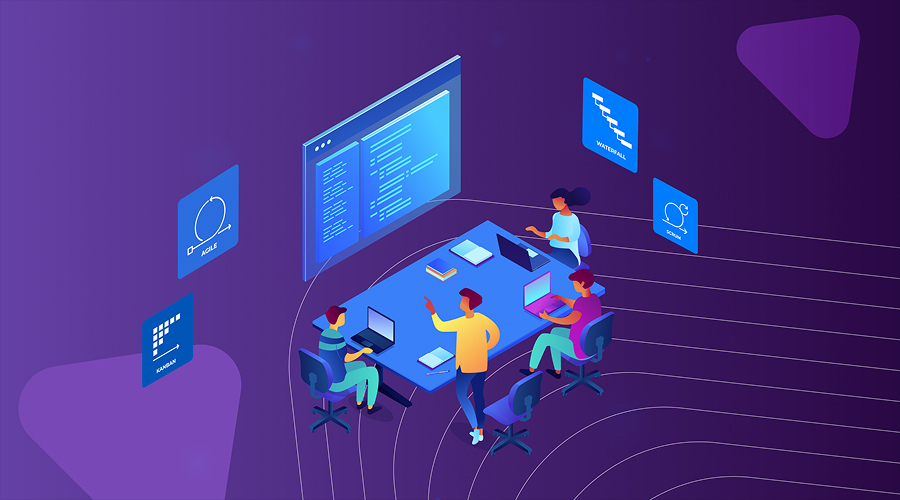
Choosing the right software development model may seem like a task at the outset. However, with the right strategy and taking into account your project size & complexity, team expertise, client involvement, risk tolerance, and timeline & budget, you can make the best choice of software development model. Here are a few tips to help you make the best choice of an SDLC model. Take a look…
1. Project Size
Understand that the size of your project matters a lot when it comes to choosing the right Software development life cycle model. These models differ for different projects, specifically for small- and large-scale projects. It is crucial to consider the size of your project when looking for the best SDLC model for your project.
2. Consider Project Complexity
How complex is your project will play a crucial role in choosing the right software development model. Know that large-scale or highly complex projects involve multiple teams, interdependent modules, and long development cycles. The right SDLC model can come out to be really beneficial in case yours is a highly complex project. Not only will it ensure faster time to ensure, but will also ensure improved customer experience.
3. Team Size & Expertise
Do consider your team size and capabilities to ensure the right selection of the software development model. Know that large teams often require structured coordination, while smaller ones prioritize flexibility more. Iterative Models and Hybrid Models are often considered ideal for highly experienced teams, while Waterfall and Big Bang models are considered best for small and less experienced teams. Make sure your team is capable of planning, documentation and testing to keep confusion and delays at bay.
4. Client Involvement
The level of client involvement is yet another aspect that influences the choice of software development model. If the software development requires too client involvement, then you are suggested to opt for the Iterative or Spiral model. In case, your project needs low client involvement, then Waterfall or Big Bang can do the needful.
5. Risk Tolerance
Then the risk tolerance is yet another significant factor to consider when choosing the best software development model for your project. Risks are inevitable parts of software development procedures. Hence, taking them into account is crucial. Risk can be technical, operational, or business related. Therefore, you are advised to choose the model mindfully. The Waterfall Model is considered ideal for low-risk projects, while Spiral is the best suited for high-risk projects. Make sure to evaluate the risk factors prior to choose the model. Doing so will allow you to effortlessly mitigate them before they arise.
6. Timeline & Budget
Last but not least are the timeline and budget that you should take into account to make the best choice of model. There are two kinds of projects: projects with tight budgets and aggressive timelines and projects with flexible budget and timelines. Both kinds of projects require different models. For instance, for projects with flexible budgets and timelines, it is wise to opt for the Spiral and Iterative models. While for projects with strict deadlines and budget, consider using the Waterfall Model.
Common Mistakes To Avoid When Selecting An SDLC Model
Committing mistakes when selecting a software development model is pretty common among developers. However, these mistakes can cost you immense time, effort and cost. Hence, it is crucial that you avoid the following mistakes to ensure the best choice of software development model. Take a look…
- One-size-fits-all approach for all your software development projects
- Not identifying the underlying requirements, including the budget, risk, and client involvement, prior to choosing the software development model
- Not considering team’s experience and capabilities
- Fully avoiding the resources available at hand
- Not involving stakeholders in the planning stage of the software development
- Opting for a model without comprehending your project size and requirements
- Choosing a trendy model instead of the one that is most suitable
- Ignoring the complexity of the project completely
Software Development Model – Which One Is Right For You?
Undoubtedly, choosing the right software development model is not very easy as it seems. You need to be careful when choosing a model for your software development project. There are several important aspects to be taken into account to make the best choice of software development model. Among several things, evaluating risk tolerance, project size, project complexities and technical expertise is crucial. All of the six models outlined above are outstanding and offer a unique process to handle a variety of project challenges. Know that the choice of software development models can impact project outcomes.
Therefore, it is crucial that you choose the model after carefully evaluating your project size, complexities, deadlines, and requirements. If you are set to develop an enterprise-grade project, then the Spiral Model is the best choice. While if you wish to develop a small-scale project and need to deliver it pretty quickly, then the Waterfall Model is the best option. All in all, by evaluating your organization’s distinct requirements, you can more effectively select a software development model that corresponds with your objectives and available resources.
The Bottom Line
So, these are the top 6 software development models for you to consider in 2025 for your development projects. These models allow teams to have enough freedom of not sticking to rigid frameworks. They allow developers to create smarter, faster and more secure solutions using individual or hybrid models. Whether you wish to develop a solution for a startup or for an already established organization, these models make the best choices.
They can be used alone as well as in hybrid models to get the job done. They offer much needed speed, adaptability, flexibility and long-term resilience. Having knowledge of these models and their use cases allow you to make the best selection that complements with your project requirement and size well. Just follow the tips above to make the best choice of software development model in 2025. Also, it is crucial to avoid mistakes that can lead to loss and delays.
If all that seems like a task, then contact WeeTech. WeeTech can help you make the best choice of software development model selection. We at WeeTech also offer tailored solutions for startups, SMEs, and enterprises that align perfectly with project goals, scope, and stakeholder expectations. Contact WeeTech for more details!
It’s now time for the frequently asked questions pertaining to software development models. Here we go…
FAQs
1. Which is the best Software Development Model?
Well, all the six models outlined above are outstanding. The choice of the best model depends on your project’s goals, complexity, timeline, and team structure. You can choose the Agile Model if you wish to build a project in small cycles and if it requires clients’ involvement more. While the Waterfall Model is an excellent option for clearly defined projects, Big Bang is best for small projects where planning can be skipped.
2. Which Software Development Models deliver faster time to market?
Incremental and Iterative models are said to deliver working software in stages, enabling early releases and faster feedback cycles.
3. Which is the best SDLC Model for an innovation-driven solution?
The Iterative Software Development Model is the best when designing innovation-driven solution. This focuses on starting with a simple version of the software and gradually enhancing it through repeated cycles or iterations. It allows developers to make improvements in the software with each iteration.
4. Can multiple software development models be combined for a project?
Yes, using hybrid models is pretty much in practice. Many developers combine different SDLC models to create software that matches clients’ requirements perfectly.
5. Which software development model is considered ideal for high-risk enterprise-grade projects?
Without any second thought, you can opt for the Spiral Model. The Spiral Model makes the best choice for high-risk projects. The Spiral Model comes with built-in risk analysis, allowing teams to identify, assess, and eliminate potential risks before moving to the next loop.
6. Which software development model is best for startups?
For startups software development projects, Agile and Iterative models are considered best. This is because these two models allow them to start small, validate fast, and evolve based on real-world feedback.

